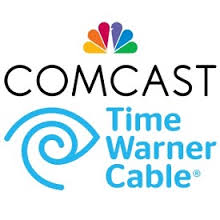Comcast: ‘Together Is Better’

Heading into the public-comment phase of its proposed merger with Time Warner Cable, Comcast has begun airing radio, TV, print and digital ads accentuating the positives of the deal.
Using the theme “Comcast + Time Warner Cable. Together is Better,” the spots initially target issues like network neutrality and faster high-speed data service.
“Folks may not realize that in most of Time Warner Cable’s footprint, their Internet speeds are much slower than ours and currently they are not subject to net-neutrality rules,” Comcast vice president of government and regulatory communications Sena Fitzmaurice said about the selection of those topics.
Future spots could include ads focusing on product innovation and a wider availability of business services, she said.
While Comcast and Time Warner Cable are confi dent their deal will win regulatory approval, a transaction combining the No. 1 and No. 2 U.S. cable operators has raised some alarm bells for public watchdog groups. The combined company will control about 30% of TV homes and 40% of broadband connections in the country.
Several public-interest groups have already come out against the merger. Free Press and Public Knowledge have been among the most vocal, claiming the combination of Comcast and Time Warner Cable would create a cable and Internet colossus that would control one-third of the television homes in the country and more than half of all “triple-play” service subscribers.
“This is literally the very first trickle in what I imagine will be a wave of PR efforts to try to make this deal smell better,” Free Press CEO Craig Aaron said. “Comcast has been very good in the past at trying to push deals like this and get a lot of groups to come out and say how good it is. ”
Multichannel Newsletter
The smarter way to stay on top of the multichannel video marketplace. Sign up below.
Comcast has said it is willing to make reasonable concessions, including adhering to extended network-neutrality guidelines and divesting 3 million customers, if needed.
The spots lead up to the filing of Comcast’s Public Interest Statement on the merger at the Federal Communications Commission, slated for later this week.
After filing that statement — a highly detailed, 100-pageplus document that maps out public benefits — the public- comment period of the approval process begins. That sets the 180-day shot clock for merger approval in motion.
Aaron said the impact of public comments varies by deal and by the make-up of the Commission.
“The FCC is the only approver here that is supposed to ask the public what they think,” Aaron said. “There are certainly FCC decisions where 99% of the public said do or don’t do one thing and the FCC did the opposite, but there are also examples where that was not the case.”
The Senate Judiciary Committee is expected to begin the first of several hearings on the merger on April 9. Comcast executive vice president David Cohen is slated to testify.
Fitzmaurice declined to say where the spots would air or for how long. But the intent is to better inform customers about the benefits of the merger, she said, especially things they may not be immediately aware of.
In addition to the ad spots, Comcast has set up a website loaded with information on the deal. It is similar to a site set up during its acquisition of a controlling interest in NBCUniversal. “It‘s good to have a clearinghouse space,” Fitzmaurice said. “We’ll add as we do the filings of the FCC documents and David Cohen’s testimony from next week, we’ll be able to add it there, so folks will always know there is a place to go if you want to look up our filings.”
